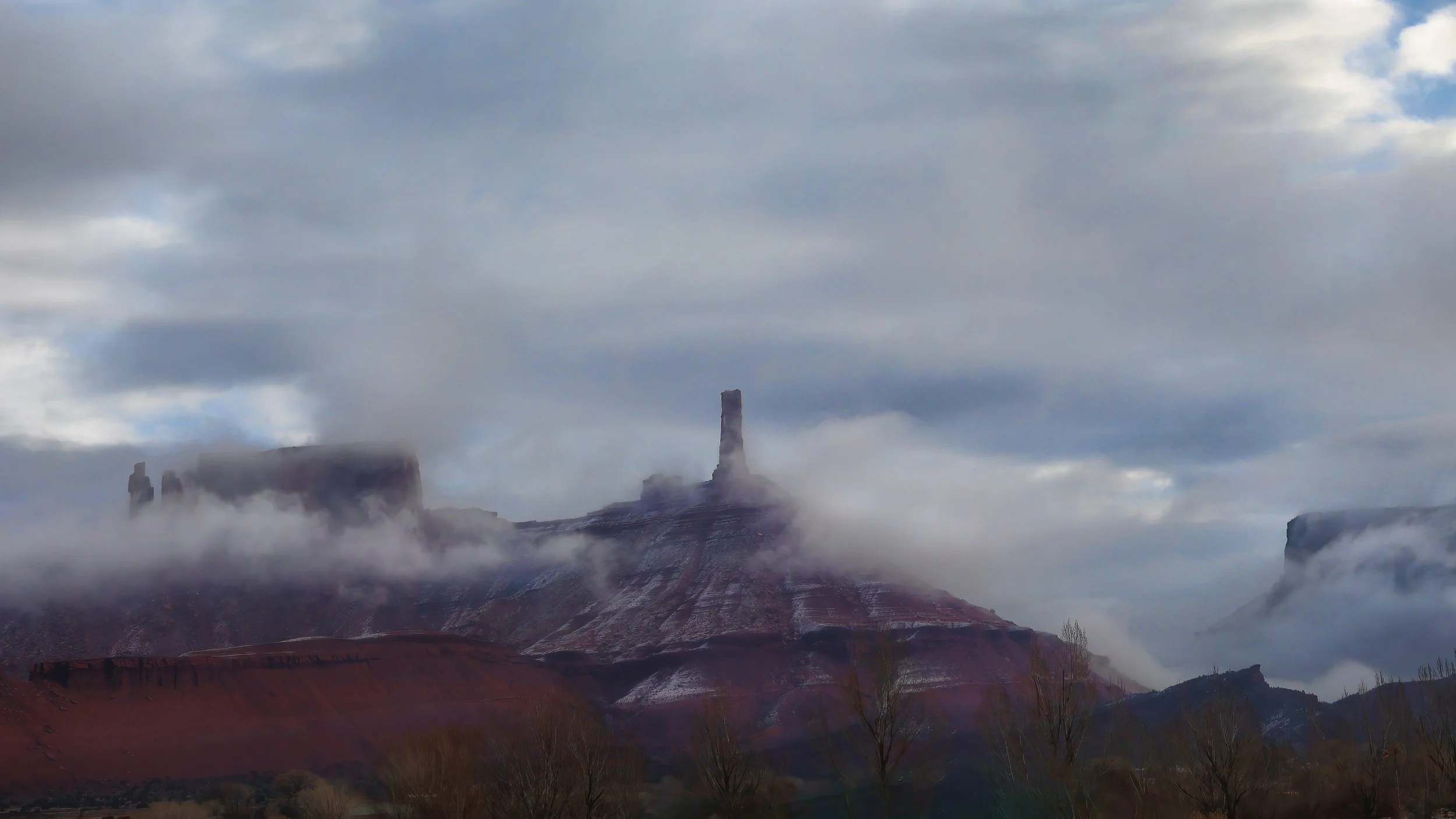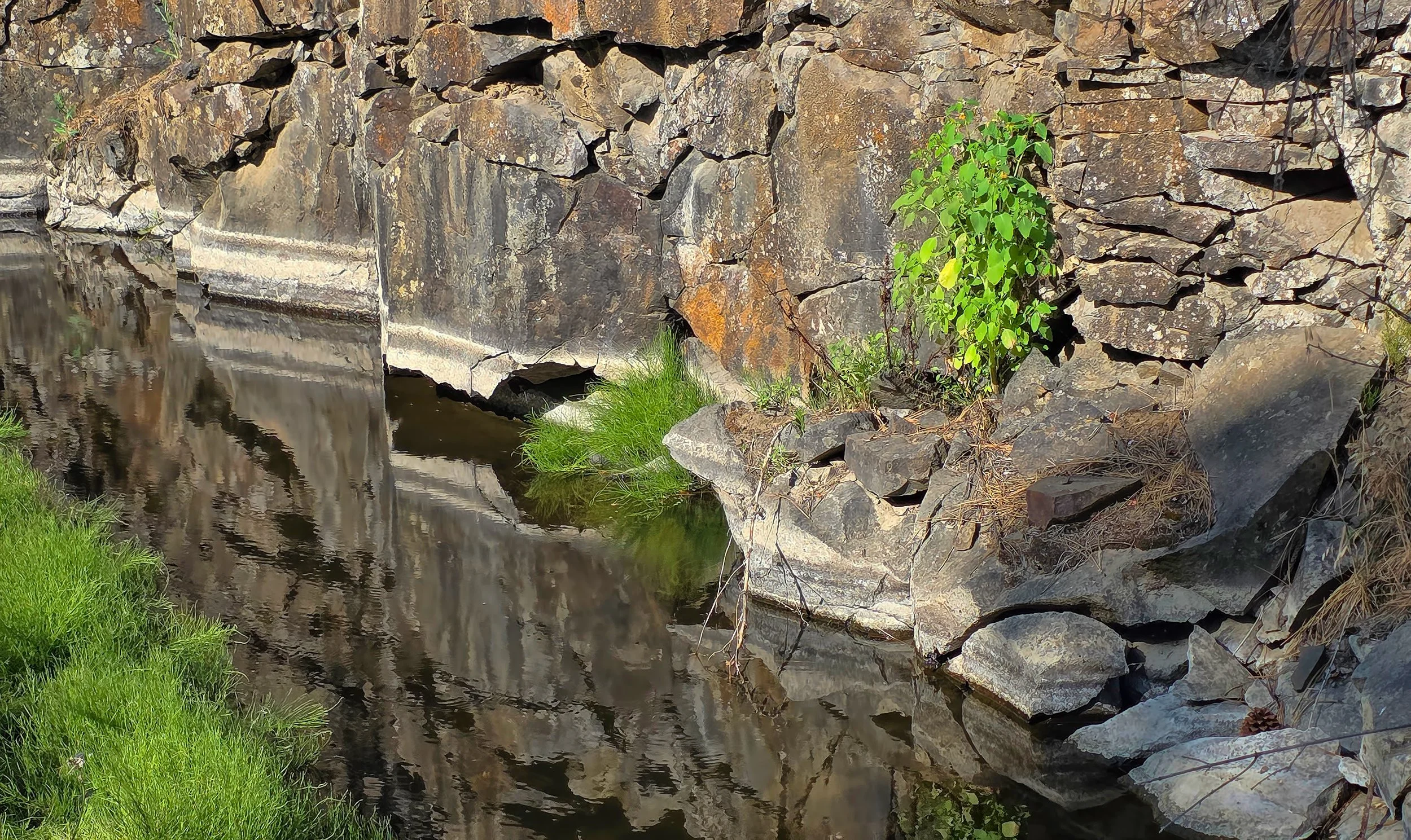and then becomes obscured by low clouds as the latest early winter storm slowly passes, the first of which that dropped snow flurries on the valley this season. Meanwhile, the high country is off to a good start, sitting at 100% median snow water equivalent for this point in the water year.
Time series plot of snow water equivalent for the Lasal Mountain SNOTEL site.



































